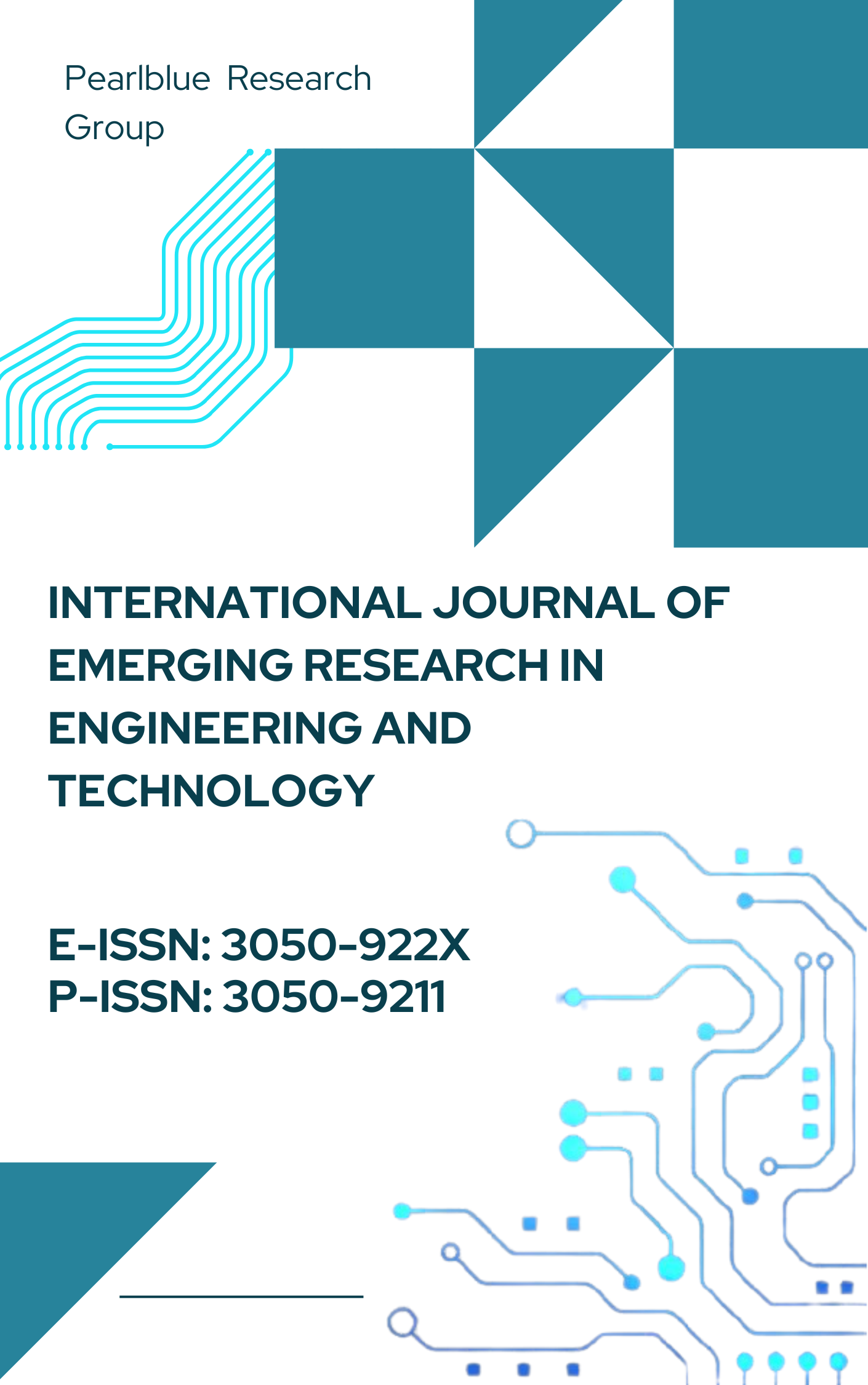Musculoskeletal Imaging and Physical Therapy: A Symbiotic Relationship in Diagnosis and Treatment
DOI:
https://doi.org/10.63282/3050-922X.IJERET-V2I4P103Keywords:
Musculoskeletal Imaging, Physical Therapy, Diagnosis, Treatment, Rehabilitation, Direct Access, Cost-Effectiveness, Patient OutcomesAbstract
The integration of musculoskeletal imaging into physical therapy practice has established a symbiotic relationship that enhances both diagnosis and treatment of musculoskeletal conditions. As physical therapists assume greater diagnostic responsibilities, the ability to utilize imaging modalities such as MRI, X-rays, and CT scans becomes crucial. This relationship is supported by evidence indicating that physical therapists can accurately interpret imaging results, leading to improved patient outcomes and cost-effectiveness. Studies have shown that when physical therapists are permitted to order imaging, they do so judiciously, reducing unnecessary procedures while maintaining high diagnostic accuracy. Furthermore, the adoption of direct access to physical therapy services empowers patients to seek care without prior physician referrals, streamlining the treatment process. This paper explores the benefits of incorporating imaging into physical therapy, including enhanced diagnostic capabilities, improved treatment planning, and increased patient satisfaction. By fostering collaboration between radiologists and physical therapists, the healthcare system can optimize patient care pathways and reduce overall healthcare costs. As the role of imaging in physical therapy continues to evolve, it is essential for practitioners to stay informed about best practices and emerging technologies that can further enhance rehabilitation outcomes
References
[1] National Center for Biotechnology Information. (n.d.). Artificial intelligence and physical therapy applications. PubMed Central. Retrieved from https://pmc.ncbi.nlm.nih.gov/articles/PMC11668540/
[2] PT Everywhere. (n.d.). AI in physical therapy. Retrieved from https://www.pteverywhere.com/media/ai-physical-therapy
[3] National Center for Biotechnology Information. (n.d.). Artificial intelligence for physiotherapy. PubMed Central. Retrieved from https://pmc.ncbi.nlm.nih.gov/articles/PMC9833483/
[4] Teerthanker Mahaveer University. (n.d.). Artificial intelligence (AI) applications in physiotherapy. Retrieved from https://www.tmu.ac.in/blog/artificial-intelligence-ai-applications-in-physiotherapy
[5] University of St. Augustine for Health Sciences. (n.d.). Artificial intelligence in physical therapy: Cool applications and fascinating implications. Retrieved from https://www.usa.edu/blog/artificial-intelligence-in-physical-therapy-cool-applications-fascinating-implications/
[6] MDPI Sensors. (2019). Artificial intelligence in healthcare. MDPI. https://www.mdpi.com/1424-8220/19/4/887
[7] National Center for Biotechnology Information. (n.d.). Physiotherapy applications. PubMed Central. Retrieved from https://pmc.ncbi.nlm.nih.gov/articles/PMC10631394/
[8] Dr. Ram Manohar Lohia Institute of Medical Sciences. (n.d.). AI in physical therapy solutions. Retrieved from https://drrmlims.ac.in/video/AI-in-Physical-Therapy-Solutions.shtm
[9] Physio-Pedia. (n.d.). Artificial intelligence (AI) in health care and rehabilitation. Retrieved from https://www.physio-pedia.com/Artificial_Intelligence_(AI)_In_Health_Care_and_Rehabilitation
[10] Shutterstock. (n.d.). Indoor photo of physical therapy session. Retrieved from https://www.shutterstock.com/image-photo/indoor-photo-physical-therapy-patient-doing-2297239529
[11] ResearchGate. (n.d.). Advancing healthcare: Harnessing artificial intelligence and machine learning in physiotherapy practice. Retrieved from https://www.researchgate.net/publication/375422515_ADVANCING_HEALTHCARE_HARNESSING_ARTIFICIAL_INTELLIGENCE_AND_MACHINE_LEARNING_IN_PHYSIOTHERAPY_PRACTICE
[12] ResearchGate. (n.d.). Revolutionizing rehabilitation: Exploring the integration of AI-based technology in advancing physiotherapy practices for enhanced patient outcomes. Retrieved from https://www.researchgate.net/publication/377212077_Revolutionizing_Rehabilitation_Exploring_the_Integration_of_AI-Based_Technology_in_Advancing_Physiotherapy_Practices_for_Enhanced_Patient_Outcomes
[13] LinkedIn. (n.d.). Inclusion of imaging in physical therapist practice. Retrieved from https://www.linkedin.com/pulse/inclusion-imaging-physical-therapist-practice-mikenzi-moir
[14] PubMed. (n.d.). Diagnostic imaging for physiotherapy. Retrieved from https://pubmed.ncbi.nlm.nih.gov/16355913/
[15] Physio-Pedia. (n.d.). Diagnostic imaging for physical therapists. Retrieved from https://www.physio-pedia.com/Diagnostic_Imaging_for_Physical_Therapists
[16] Journal of Orthopaedic & Sports Physical Therapy. (2005). Diagnostic imaging in physical therapy. Retrieved from https://www.jospt.org/doi/pdf/10.2519/jospt.2005.35.11.708
[17] ResearchGate. (n.d.). Musculoskeletal imaging in physical therapist practice. Retrieved from https://www.researchgate.net/publication/297460005_Musculoskeletal_Imaging_in_Physical_Therapist_Practice
[18] ResearchGate. (n.d.). Musculoskeletal imaging in physical therapist practice. Retrieved from https://www.researchgate.net/publication/7414118_Musculoskeletal_Imaging_in_Physical_Therapist_Practice
[19] International Journal of Sports Physical Therapy. (n.d.). Musculoskeletal imaging for low back pain in direct access physical therapy compared to primary care: An observational study. Retrieved from https://ijspt.org/musculoskeletal-imaging-for-low-back-pain-in-direct-access-physical-therapy-compared-to-primary-care-an-observational-study/
[20] Healthline. (n.d.). Musculoskeletal disorders. Retrieved from https://www.healthline.com/health/musculoskeletal-disorders
[21] Pfizer. (n.d.). Musculoskeletal conditions. Retrieved from https://www.pfizer.com/disease-and-conditions/musculoskeletal-conditions
[22] ErgoPlus. (n.d.). Musculoskeletal disorders (MSD). Retrieved from https://ergo-plus.com/musculoskeletal-disorders-msd/
[23] World Health Organization. (n.d.). Musculoskeletal conditions. Retrieved from https://www.who.int/news-room/fact-sheets/detail/musculoskeletal-conditions
[24] Medical News Today. (n.d.). Musculoskeletal disorders. Retrieved from https://www.medicalnewstoday.com/articles/musculoskeletal-disorders
[25] European Agency for Safety and Health at Work. (n.d.). Musculoskeletal disorders. Retrieved from https://osha.europa.eu/en/themes/musculoskeletal-disorders
[26] PubMed. (n.d.). Learning and integration in diagnostic imaging for physical therapists. Retrieved from https://pubmed.ncbi.nlm.nih.gov/36259351/
[27] PubMed. (n.d.). Diagnostic imaging applications in physiotherapy. Retrieved from https://pubmed.ncbi.nlm.nih.gov/16355913/
[28] F.A. Davis Company. (n.d.). Diagnostic imaging in physical therapy. Retrieved from https://fadavispt.mhmedical.com/content.aspx?bookid=3055§ionid=255249071
[29] F.A. Davis Company. (n.d.). Diagnostic imaging applications. Retrieved from https://fadavispt.mhmedical.com/content.aspx?bookid=1899§ionid=141193749
[30] Journal of Orthopaedic & Sports Physical Therapy. (2005). Diagnostic imaging. Retrieved from https://www.jospt.org/doi/pdf/10.2519/jospt.2005.35.11.708
[31] EventCloud. (n.d.). PACE conference on diagnostic imaging. Retrieved from https://na.eventscloud.com/ehome/pace.june.29.2013/
[32] American Journal of Roentgenology. (n.d.). Musculoskeletal imaging. Retrieved from https://ajronline.org/doi/10.2214/AJR.19.21117
[33] PubMed Central. (n.d.). Musculoskeletal imaging in AI applications. Retrieved from https://pmc.ncbi.nlm.nih.gov/articles/PMC10866817/



